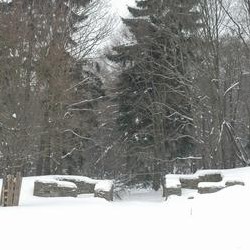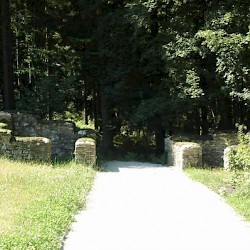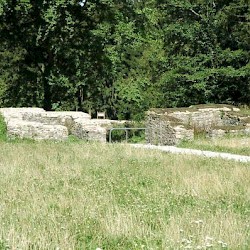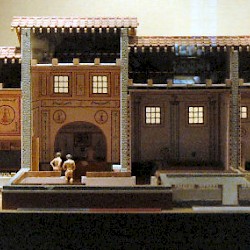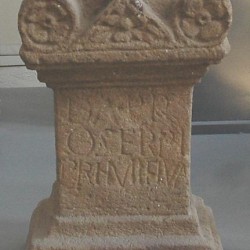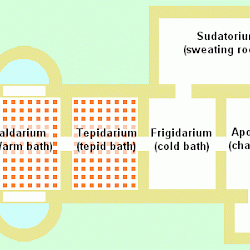Feldberg
Q1735383Feldberg Limes Castle: Roman fort, north of modern Frankfurt am Main, part of the limes.

In 83, the Roman emperor Domitian attacked the Chatti, a tribe living in the Taunus mountains, north of modern Frankfurt am Main. To defend the fertile valley of the Main that now had been added to the Roman Empire, a line of fortifications (limes) was built along the summits of the mountain range. On many places, you can still discern the remains of the wall itself (agger) and the ditch (fossa) in front of it. Although not impassable, it was a formidable obstacle that made it clear where the Roman civilization ended.

One of this castles, with a size of about 0.7 hectare, has been identified on the Little Feldberg, between modern Glasshütten and Königstein im Taunus. Today, it is an open place in the mountain forest, but in Antiquity, it was of course open country.
The map of the Feldberg Limes Castle shows the normal components of any Roman fort: principia (headquarters), a horreum (granary), and a praetorium, which was the mansion of the commander of this fort. The Feldberg Limes Castle was built during the reign of the Roman emperor Antoninus Pius (138-161), who is also known for the fortifications he built in southern Scotland: Antonine's wall.
This was an important stretch of the limes, because there was a gold mine in the neighborhood. An inscription from the end of the reign of Severus Alexander (222-235; below), informs us that the fort at the Feldberg offered accommodation to an auxiliary unit of mounted scouts, recruited in what is now Hungary: the Exploratio Halicanesium Alexandriana. There may have been 100 to 150 of these cavalrymen.

The next castle to the west was discovered at Heftrich. Between the two military settlements was an important pass - still a local road of some importance - and it would have been more logical to build a fort in the pass itself, but there was no water over there. At the Feldberg, however, the Roman soldiers had access to two wells, which were also used by the inhabitants of the small village that has been found to the south of the fort. The next castle to the east was the Saalburg,which has been fully rebuilt by archaeologists and is one of the oldest museum parks in the world.
Between the northwestern gate and the limes wall - which was some hundred meters away - was a bathhouse (thermae), which was once known to the local population as the Heidenkirche ("Pagan church"). There is nothing exceptional about it. Even very small forts like Freimühle or forts in the Libyan desert like Bu Njem, where wood and water were precious, had a bathhouse. And always, archaeologists are able to identify a cold bath, a tepid bath, and a warm bath. Roman soldiers lived in considerable luxury.
As already indicated, to the south of the fort, on the slopes of a hill, was the vicus, the civil settlement that was occupied by the traders who brought food supplies to the fort, a handful of farmers, an innkeeper or two, and the soldiers' girlfriends and wives. Among the other residents may have been the people working in the local gold mine.
